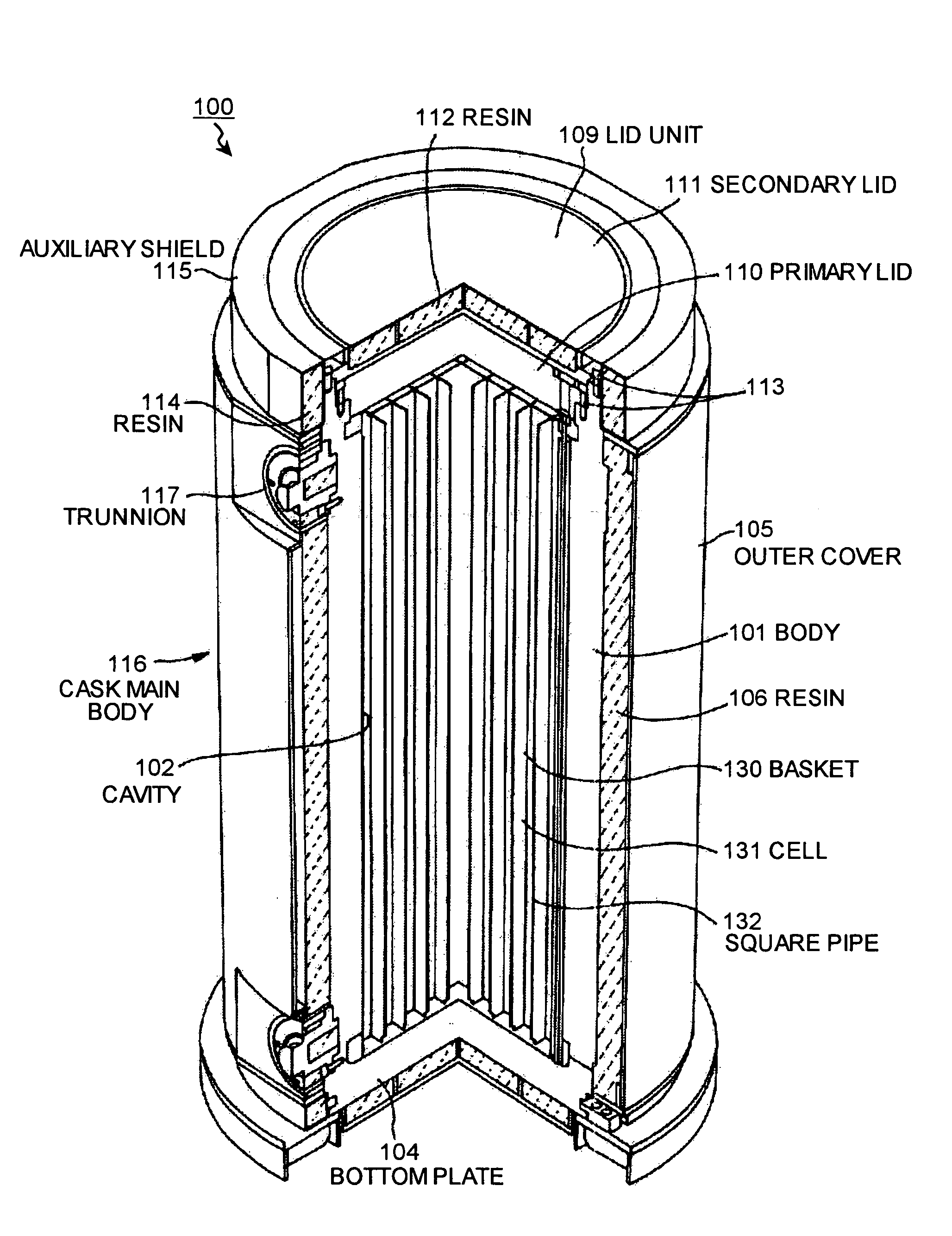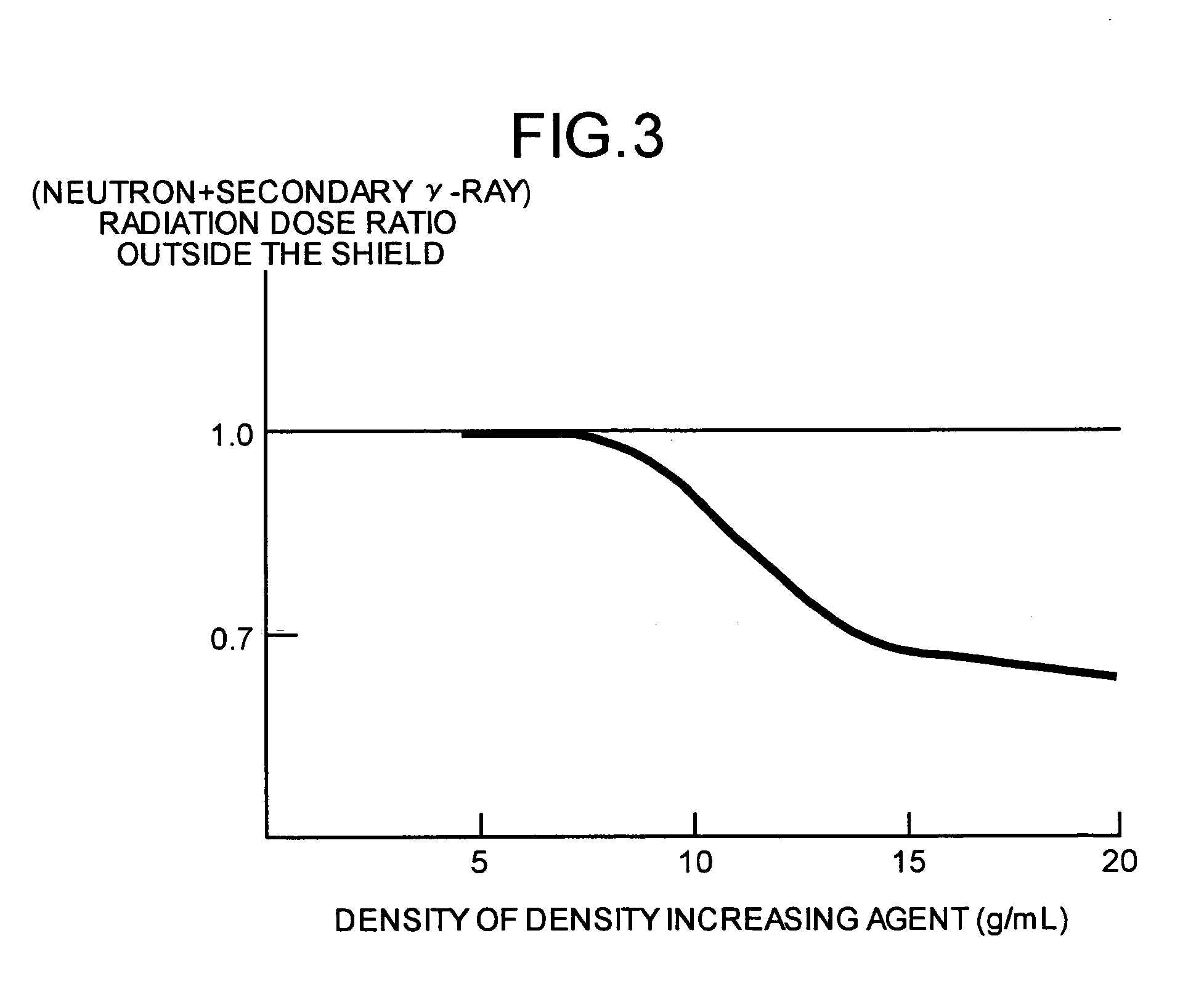Cask, composition for neutron shielding body, and method of manufacturing the neutron shielding body
a neutron shielding body and composition technology, applied in the field of composition for neutron shielding bodies, can solve the problems of material damage to nuclear facilities, unsuitability for neutron shields, and large thickness, and achieve the effect of maintaining -ray shielding performance and enhancing neutron shielding
- Summary
- Abstract
- Description
- Claims
- Application Information
AI Technical Summary
Benefits of technology
Problems solved by technology
Method used
Image
Examples
second embodiment
[0074]The neutron shield according to the present embodiment is, as shown in FIG. 1, obtained by mixing, into an epoxy resin having a low hydrogen content as the neutron shielding material 1 comprised mainly of a polymer, the refractory material 2 and density increasing agent 3 having a density higher than that of the refractory material 2, and then processing the resultant mixture by curing and shaping.
[0075]Particularly, by mixing metal powder or metal oxide powder as the density increasing agent 3, a neutron shield comprised of a cured epoxy resin having a low hydrogen content is formed.
[0076]The density increasing agent 3 to be mixed may have a density equal to or more than 5.0 g / ml, preferably 5.0 g / ml to 22.5 g / ml, more preferably 6.0 g / ml to 15 g / ml.
[0077]As the density increasing agent 3, it is preferred to mix metal powder having a melting point equal to or higher than 350° C. or metal oxide powder having a melting point equal to or higher than 1000° C.
[0078]As materials fo...
experimental example 8
[0197]To 38.7 wt % of a general bisphenol A base material, which was not hydrogenated, was added 12.9 wt % of a curing agent comprised mainly of an alicyclic amine to form an epoxy resin raw material, and to the raw material were added 28.0 wt % of magnesium hydroxide powder (particle size adjusted) as a refractory material and 1.5 wt % of B4C as a neutron absorber, and then 19.0 wt % of Cu powder was added thereto and mixed with one another at room temperature in a vacuum, and the resultant mixture was charged into a die and cured at room temperature for one day, followed by curing at 140° C. for 10 hours, obtaining a neutron shield in Example 25.
[0198]Table 7 shows a comparison in terms of the neutron shielding ability between Example 25 and Comparative Example 8 (neutron shield for BWR metal cask) in which no metal powder was added as conventional.
[0199]As shown in Table 7, in Example 25, by adding metal powder to the neutron shielding material comprised mainly of a polymer, the ...
PUM
| Property | Measurement | Unit |
|---|---|---|
| mass percent | aaaaa | aaaaa |
| mass percent | aaaaa | aaaaa |
| mass percent | aaaaa | aaaaa |
Abstract
Description
Claims
Application Information
 Login to View More
Login to View More - R&D
- Intellectual Property
- Life Sciences
- Materials
- Tech Scout
- Unparalleled Data Quality
- Higher Quality Content
- 60% Fewer Hallucinations
Browse by: Latest US Patents, China's latest patents, Technical Efficacy Thesaurus, Application Domain, Technology Topic, Popular Technical Reports.
© 2025 PatSnap. All rights reserved.Legal|Privacy policy|Modern Slavery Act Transparency Statement|Sitemap|About US| Contact US: help@patsnap.com



